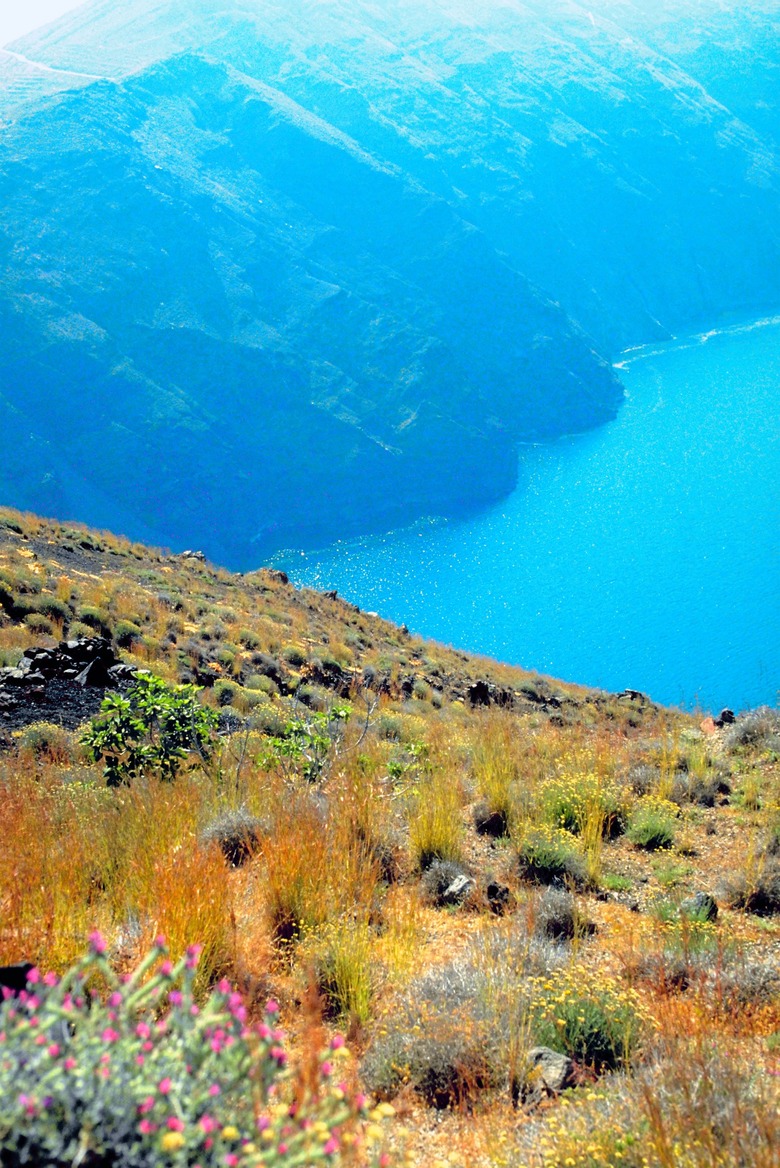Biotic Components Of Ecosystems
Biotic, or living, components of ecosystems include all the plants, animals, fungi and microorganisms that make up ecological communities. All organisms in an ecosystem are interdependent — drawn together in tight associations as members of complex food chains and food webs. They are also highly diverse — dependent on and specifically adapted to the many and varied environments in which they live and on the abiotic, or nonliving, components.
Pond Ecosystems
Pond Ecosystems
Freshwater pond ecosystems around the world provide homes for numerous aquatic and semi-aquatic organisms. Producers or autotrophs in the pond food chain, such as algae and pond lilies, manufacture chemical energy, or sugars, through photosynthesis. Primary consumers or heterotrophs obtain their energy by eating producers: small fish and turtles may nibble on aquatic plants while beavers chew on nearby trees. Preying on primary consumers are long-legged blue herons, frogs and water snakes — the heron relishing frogs and snakes as well. Blood-sucking mosquitoes, intimate with many animals in the pond, act as both parasite and prey and spend their larval stages under water. Snails, crayfish and other decomposers eat dead organisms and organic wastes on the pond floor. They help complete the food chain, returning inorganic nutrients to the ecosystem.
Temperate Deciduous Forest Ecosystems
Temperate Deciduous Forest Ecosystems
Temperate deciduous forests grow in temperate regions around the world, where solar radiation changes with the seasons and rainfall is frequent and abundant enough to support trees. Broad-leaved beech-maple or oak-hickory forests dominate, dropping their leaves each fall, although some evergreens or conifers may join the mix. In spring, understory dogwoods and wildflowers bloom frantically before larger trees leaf out. Wood mice, turkeys and bumblebees consume the seeds, fruit and nectar of producers. In winter, fertilized bumblebee queens hibernate underground, as do chipmunks and snakes. Omnivores and carnivores, such as raccoons, woodpeckers and wolves, devour both consumers and producers. Slime molds, millipedes and earthworms turn organic matter into nutrient-rich humus soil in which woodland plants thrive.
Mediterranean Shrublands or Chaparral Ecosystems
Mediterranean Shrublands or Chaparral Ecosystems
Cool, wet winters and hot, fire-prone summers describe Mediterranean shrublands, forest, scrub or chaparral, found near the Mediterranean and in other coastal regions around the world. Fire-resistant manzanita, scrub oak and sage brush are some of the drought-hardy plants that pepper chaparral landscapes. Many plants go dormant during summer's heat and drought while some animals, including the grass snake, undergo torpor — lowering of the metabolic rate, akin to hibernation — to survive. Hedgehogs and jack rabbits feed golden jackals and eagles, and honey buzzards, enormous condors and garden snails help recycle dead animals and plants.
Hot Desert Ecosystems
Hot Desert Ecosystems
Low precipitation levels — under six inches annually — define hot desert ecosystems; tolerance to drought and heat defines their inhabitants. Desert plants cope by storing water and growing thorns instead of leaves, which limit transpiration. Many desert animals survive by living underground or venturing outside only in the cool of night. The kangaroo rat and jerboa, possessing extremely efficient kidneys, get all the water they need nibbling on insects, plants or seeds. Herbivorous pocket mice, antelopes and desert tortoises eat plants and seeds, including cacti and creosote, while bobcats, lizards and burrowing owls prey on them. Black vultures, always on the lookout for carrion in this harsh environment, help termites, worms and bacteria make up the desert detritus food chain.
References
Cite This Article
MLA
Carter, Kari Norborg. "Biotic Components Of Ecosystems" sciencing.com, https://www.sciencing.com/biotic-components-ecosystems-14613/. 13 March 2018.
APA
Carter, Kari Norborg. (2018, March 13). Biotic Components Of Ecosystems. sciencing.com. Retrieved from https://www.sciencing.com/biotic-components-ecosystems-14613/
Chicago
Carter, Kari Norborg. Biotic Components Of Ecosystems last modified August 30, 2022. https://www.sciencing.com/biotic-components-ecosystems-14613/
